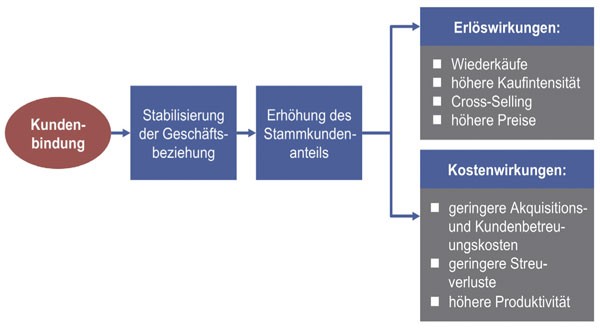The products and services of most companies are becoming increasingly similar. This circumstance makes it increasingly difficult in many industries to distinguish stand out from competitors and achieve a head start. In recent years, the digital upheaval has accelerated development toward full Market transparency brought about. Customers today are more enlightened than ever before. They hold the reins in their hands and have high expectations for a fast and comprehensive Customer service. The contemporary answer to this phenomenon is called Customer Experience Management.

Customer Experience Management - Customer Motivation with a System
Conventional customer service is no longer a promising concept for achieving a long-term and profitable Customer loyalty produce. This is true even if no complaints occur over many years and a customer is satisfied with the service he or she has purchased. However, this often leads neither to further recommendations nor to extended Customer Lifetime Value.
Today, customers only experience repeated positive experiences with a provider as a self-evident fulfillment of a transaction.
In addition, they are aware of the leverage they have through platforms such as Social media and other digital platforms available, quite consciously. Negative experiences quickly find their way to the public via online media, whereby it makes no difference in this respect whether they are still so unique or can be quickly corrected from the provider's point of view. For the new self-image of customers, the Customer Experience Management a framework ready, in which they new positive experiences and increasingly see themselves as partners of the company.

These are the effects of optimized customer retention
With methods of the Customer Experience Management the customer's irritation threshold is exceeded and a new form of customer service is installed. At Consistent and rigorously pursued implementation of the system and organic integration into the corporate culture, several effects can be expected with innovative customer loyalty strategy:
- Deepened customer loyalty up to Superloyalty
- Measurably higher Net Promoter Score (NPS)
- Substantial higher sales with optimized customer performance
- Competitive advantage through adaptive Customer Experience Journey
- Savings through automated services and outreach digitization.
The holistic approach to customer experience management goes well beyond isolated measures installed for key accounts and premium customers. Through the integration of as a customer loyalty concept that is effective at all levels. customers can be addressed and inspired at every stage.

Surveys as a basis for customer loyalty
The basis for long-term customer loyalty is a thorough and regularly updated analysis of the target group. Customer wishes, customer behavior and customer motivation are important parameters for developing a system of optimized Customer loyalty to be able to apply successfully.
In order to increase the penetration depth achieved by previous customer retention measures at a customer's and Corporate Perception to determine are Surveys a proven and versatile tool. At the same time, this tool must be used with caution and circumspection, as both B2B and B2C customers hardly ever react positively to surveys anymore and are aware of their own Values for the marketing quite consciously are.
The most effective and appealing surveys are therefore those that are hardly perceived as such.
You should fail short and a entertaining character own. When asking for customer feedback, an authentic appearance pays off. The customer is given the feeling of being in partnership with the company. And that via their own commitment to a further Performance improvements is contributed.
Touchpoints - elementary building blocks of the customer experience
One customer is already developing at the first contact an attitude toward a company. This image then solidifies as more touchpoints are added over time. This makes it all the more important for a company to Timing and the sequence of touchpoints anticipate and provide an exclusive customer experience.

A good Knowledge of the individual customer profiles is helpful for this. A harmonious coordination of the Touchpoints with the Customer Journey and the interpretation of the customer signals sent until completion or cancellation is fundamental. This is because conclusions can be drawn about which Customer needs still to be met are and how a optimal experience can be produced.
The customer as an actor in his customer experience
With the tool Customer Experience Management a company neither takes the lead over the customer nor pushes him in a certain direction - this would not even be possible. The self-confident Customer acts largely independently in the digital age and has broken away from traditional sales.
The customer checks providers, compares Products and prices, informs about Reviews and reads reviews on the background of a company. He is able to create a Market participants well to assess, without the latter even being aware of the customer's awareness.
Customer Experience Management keeps the customer on track
Through analyses, important findings can also be obtained from potential customers attract customers who may never become paying customers. The Analysis of traffic, sessions and shopping cart abandonment allows conclusions to be drawn as to which experiences would be a continuation of the Customer Journey may have prevented. By retracing the steps taken by the customer, it is possible to Design measures. As it is pointed out what blockages or disruptions there were that need to be removed so that a customer journey is more likely to continue.

Customer Experience Mapping therefore begins with the first call to a hotline or a visit to the company website. By enabling the customer to make First contact is encouraged to interact and provide feedback, even fleeting contacts can provide valuable information. For example, what a consistent and user-friendly installation of customer experience management might look like.





